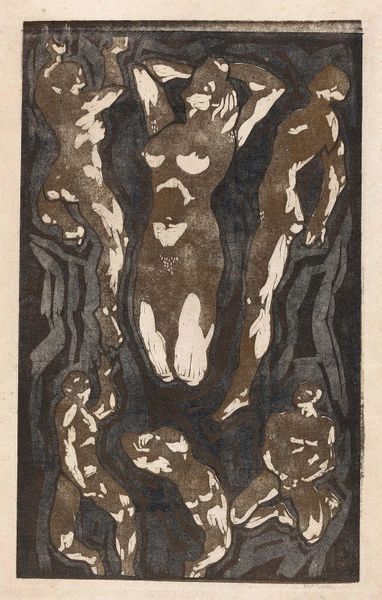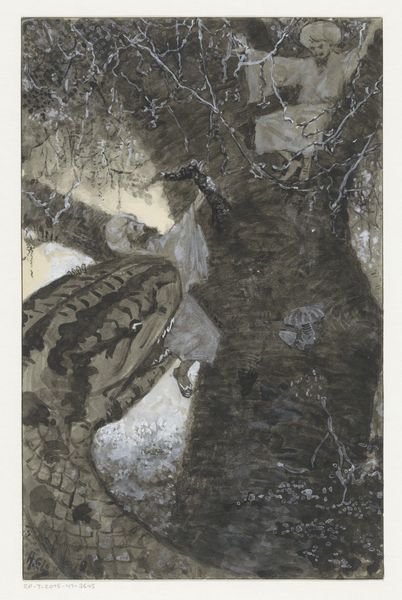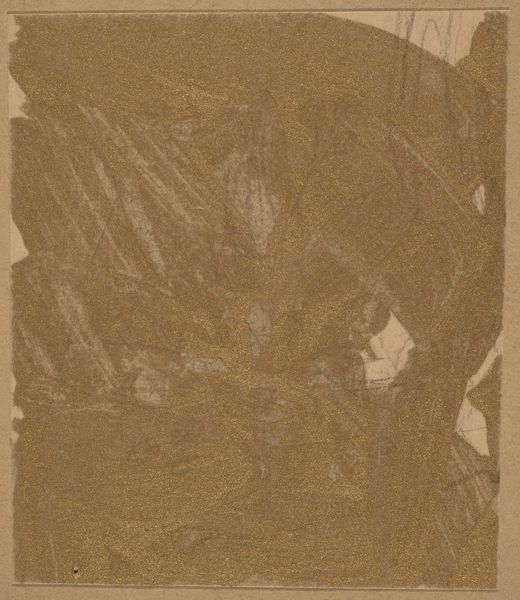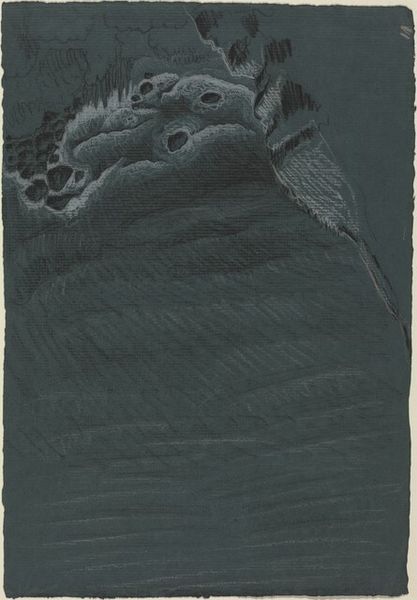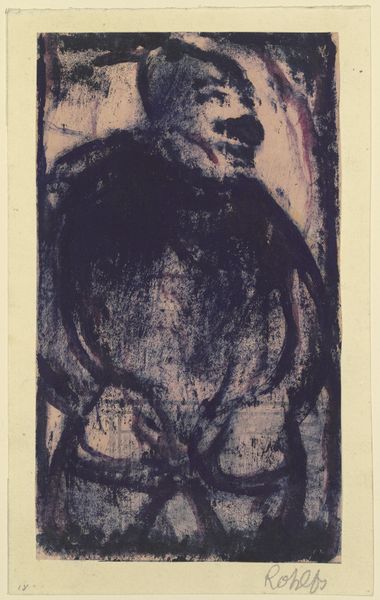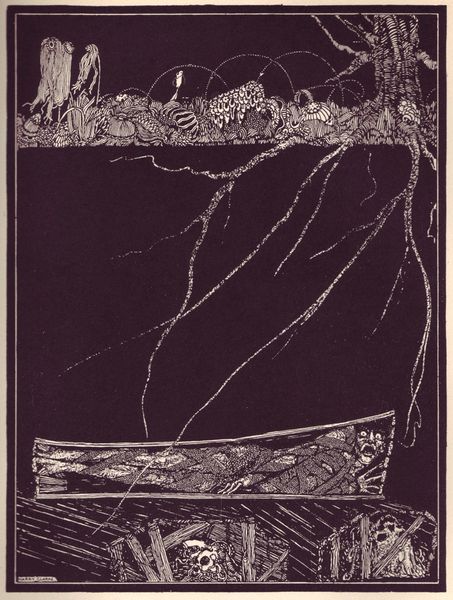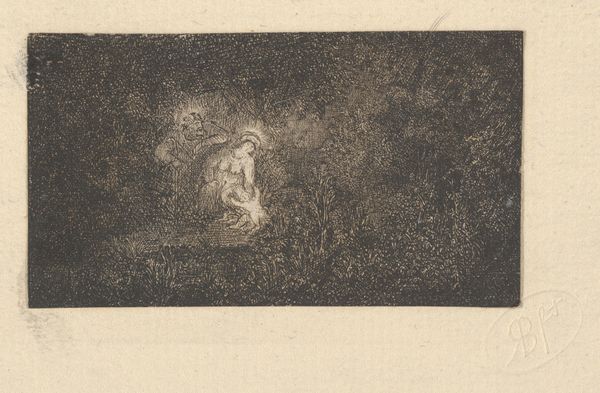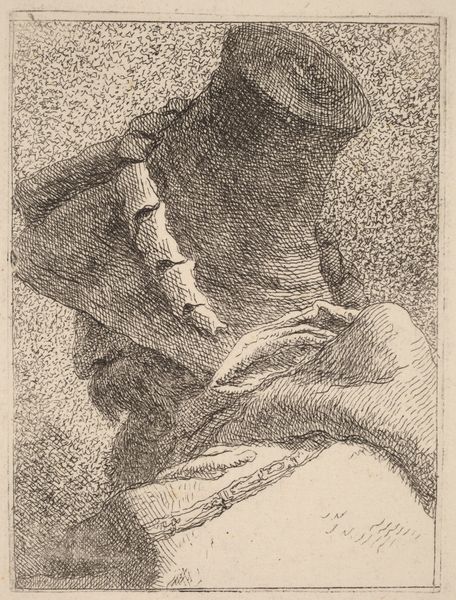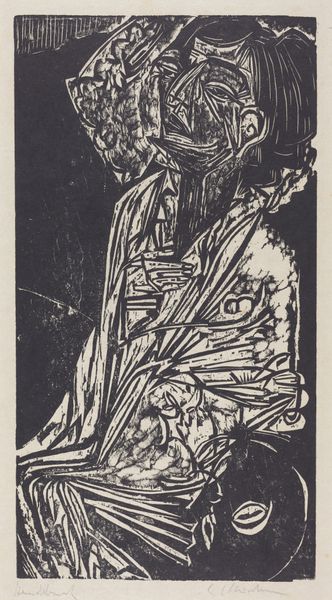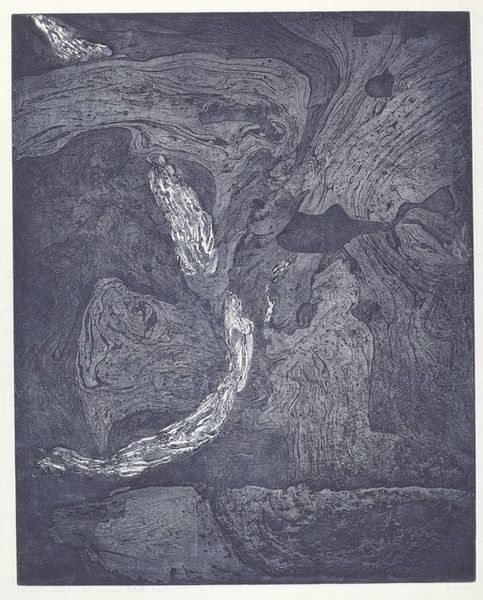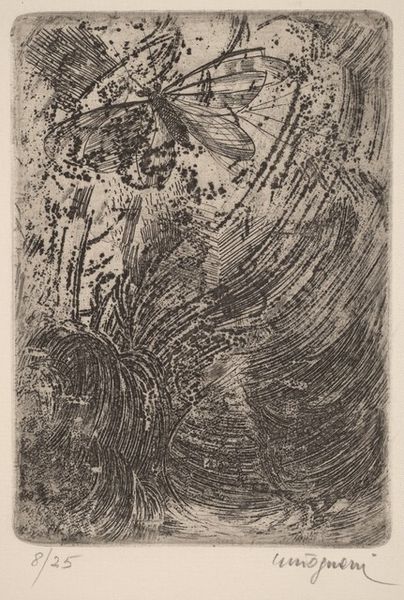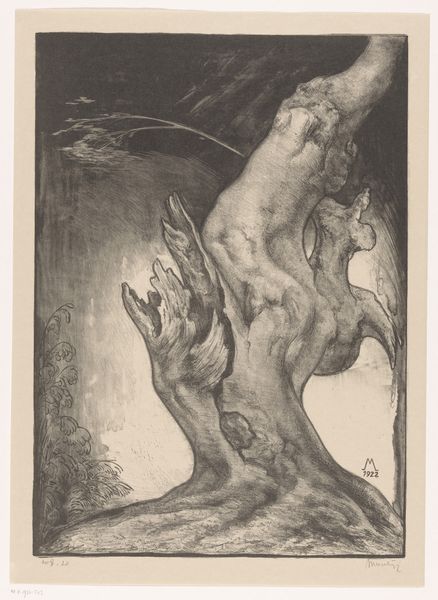
print, engraving
# print
#
figuration
#
symbolism
#
history-painting
#
engraving
Dimensions: block: 23.6 × 17.1 cm (9 5/16 × 6 3/4 in.) sheet: 32 × 24.8 cm (12 5/8 × 9 3/4 in.)
Copyright: National Gallery of Art: CC0 1.0
Curator: Take a moment to look at this print from 1916, titled "Ila e le ninfe" by Adolfo De Carolis. It's an engraving depicting Hylas and the nymphs. Editor: It strikes me as very visceral. The interwoven bodies practically writhe on the surface, amplified by those dense, cross-hatched lines and stark contrasts. Is that a deliberately harsh feel, considering the story? Curator: It resonates with the symbolism that infuses the tale of Hylas. In Greek mythology, Hylas, a youth and companion of Hercules, is abducted by water nymphs. This image seems less about literal abduction, and more about transformation, almost a forceful initiation. Editor: Interesting, and what I find really compelling is the almost violent process by which an engraving such as this would have been made, pushing a burin across the metal, gouging it to make these very clear linear marks which in turn make the figures. And, there are multiple states here–we see distinct variations of color used to model different parts of the bodies. Curator: Absolutely, color adds a psychological layer. The nymphs' forms seem to bleed into the teal water, merging their identities and intentions. Note how Hylas’ flesh is of the color and substance as if the earth itself—an earthly youth merging with the immaterial essence of nature. Editor: It makes you think about the function of history painting. By the 20th century, what purpose does retelling these myths serve for an artist? And why this painstaking printmaking technique for reproducing it? It's slow, laborious— Curator: But also lends it an almost archetypal, eternal quality. The act of recreating the image, pressing it again and again, reinforces the story's cyclical nature—a warning and a potent allegory. This wasn't created to simply adorn a wall. Editor: So, for you, the choice of engraving strengthens the cultural weight behind the artwork? That is fascinating...I keep coming back to the physicality of the process here, the very intentionality of using this traditional means in a quickly modernizing era. Curator: It invites us to consider how potent myths survive precisely because they adapt and reincarnate through diverse visual symbols, retaining their ability to awaken and terrify us across millennia.
Comments
No comments
Be the first to comment and join the conversation on the ultimate creative platform.

